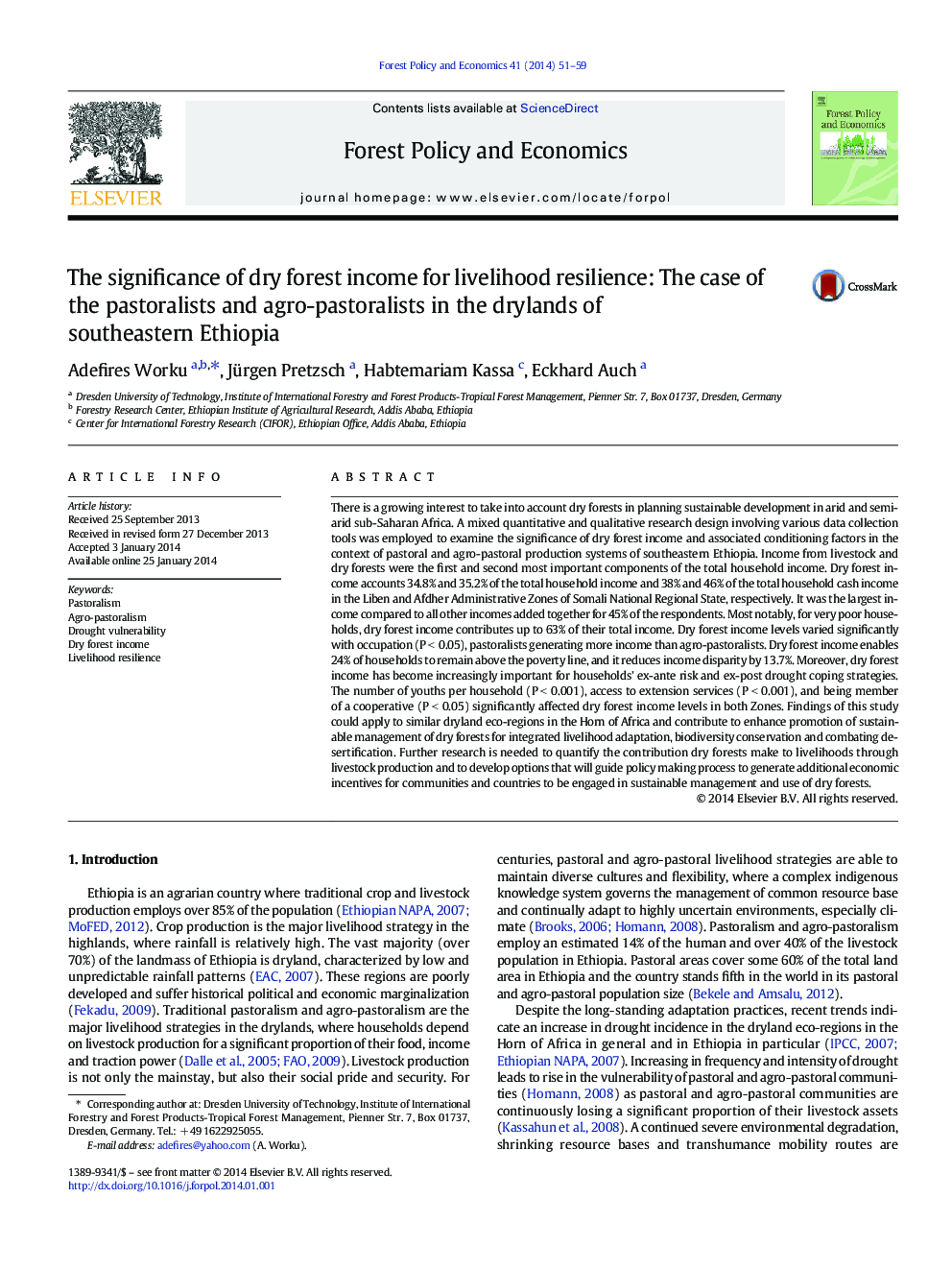| کد مقاله | کد نشریه | سال انتشار | مقاله انگلیسی | نسخه تمام متن |
|---|---|---|---|---|
| 6544990 | 159791 | 2014 | 9 صفحه PDF | دانلود رایگان |
عنوان انگلیسی مقاله ISI
The significance of dry forest income for livelihood resilience: The case of the pastoralists and agro-pastoralists in the drylands of southeastern Ethiopia
ترجمه فارسی عنوان
اهمیت درآمد جنگل خشک برای انعطاف معیشت: مورد دامداران و کشاورزان در خشکی جنوب شرقی اتیوپی
دانلود مقاله + سفارش ترجمه
دانلود مقاله ISI انگلیسی
رایگان برای ایرانیان
کلمات کلیدی
اصلاح طلبی، کشتارگاه کشاورزی، آسیب پذیری خشکسالی، درآمد جنگل خشک، انعطاف پذیری معیشت،
موضوعات مرتبط
علوم زیستی و بیوفناوری
علوم کشاورزی و بیولوژیک
جنگلداری
چکیده انگلیسی
There is a growing interest to take into account dry forests in planning sustainable development in arid and semi-arid sub-Saharan Africa. A mixed quantitative and qualitative research design involving various data collection tools was employed to examine the significance of dry forest income and associated conditioning factors in the context of pastoral and agro-pastoral production systems of southeastern Ethiopia. Income from livestock and dry forests were the first and second most important components of the total household income. Dry forest income accounts 34.8% and 35.2% of the total household income and 38% and 46% of the total household cash income in the Liben and Afdher Administrative Zones of Somali National Regional State, respectively. It was the largest income compared to all other incomes added together for 45% of the respondents. Most notably, for very poor households, dry forest income contributes up to 63% of their total income. Dry forest income levels varied significantly with occupation (PÂ <Â 0.05), pastoralists generating more income than agro-pastoralists. Dry forest income enables 24% of households to remain above the poverty line, and it reduces income disparity by 13.7%. Moreover, dry forest income has become increasingly important for households' ex-ante risk and ex-post drought coping strategies. The number of youths per household (PÂ <Â 0.001), access to extension services (PÂ <Â 0.001), and being member of a cooperative (PÂ <Â 0.05) significantly affected dry forest income levels in both Zones. Findings of this study could apply to similar dryland eco-regions in the Horn of Africa and contribute to enhance promotion of sustainable management of dry forests for integrated livelihood adaptation, biodiversity conservation and combating desertification. Further research is needed to quantify the contribution dry forests make to livelihoods through livestock production and to develop options that will guide policy making process to generate additional economic incentives for communities and countries to be engaged in sustainable management and use of dry forests.
ناشر
Database: Elsevier - ScienceDirect (ساینس دایرکت)
Journal: Forest Policy and Economics - Volume 41, April 2014, Pages 51-59
Journal: Forest Policy and Economics - Volume 41, April 2014, Pages 51-59
نویسندگان
Adefires Worku, Jürgen Pretzsch, Habtemariam Kassa, Eckhard Auch,
